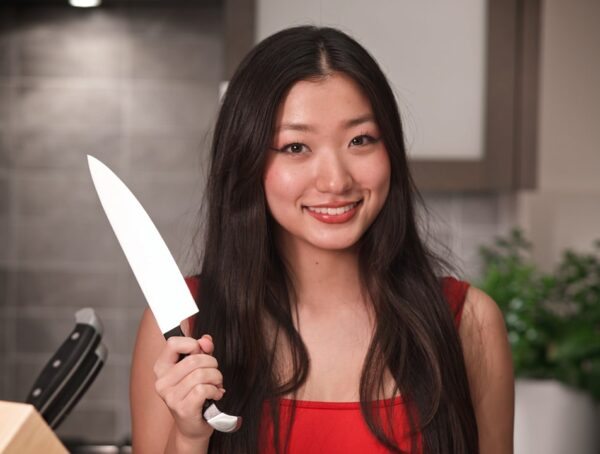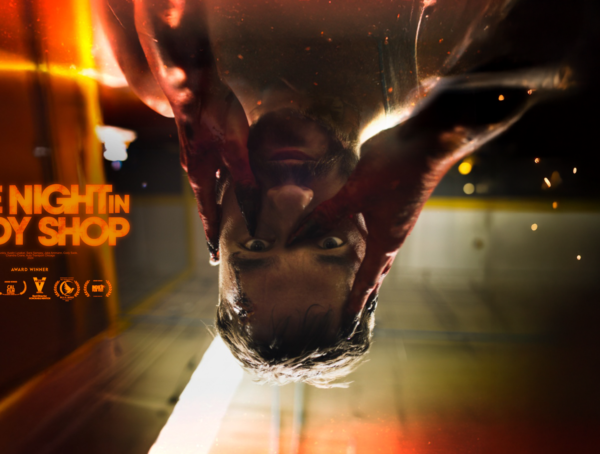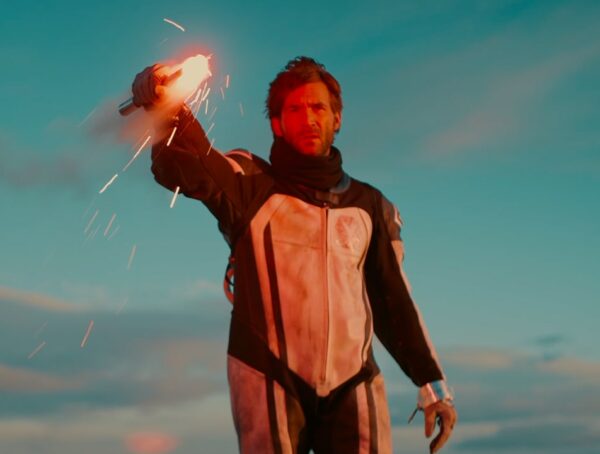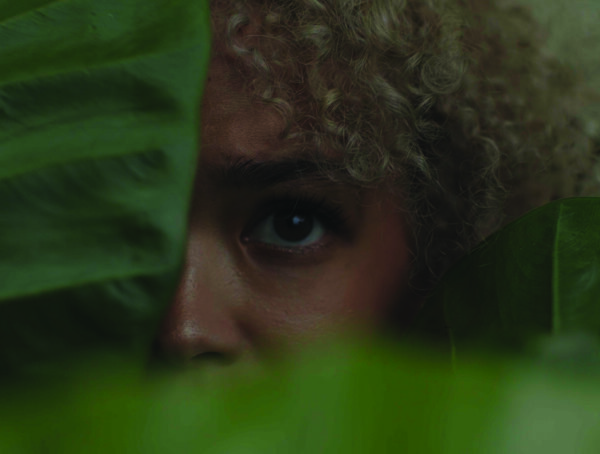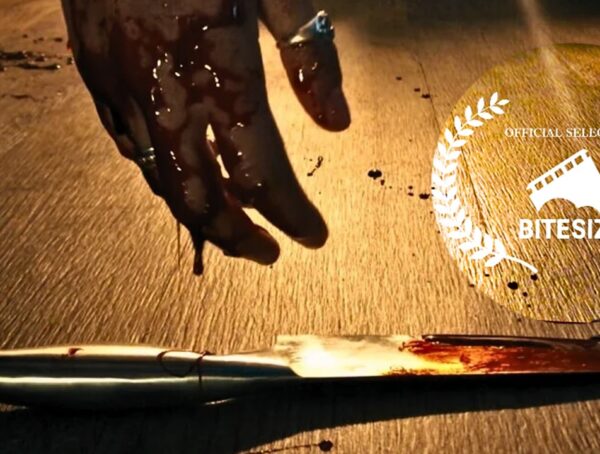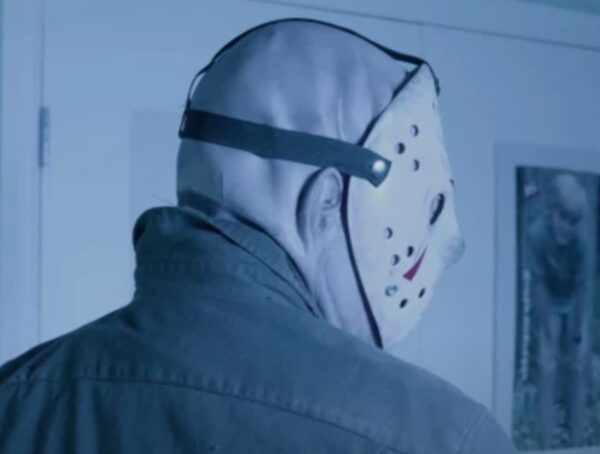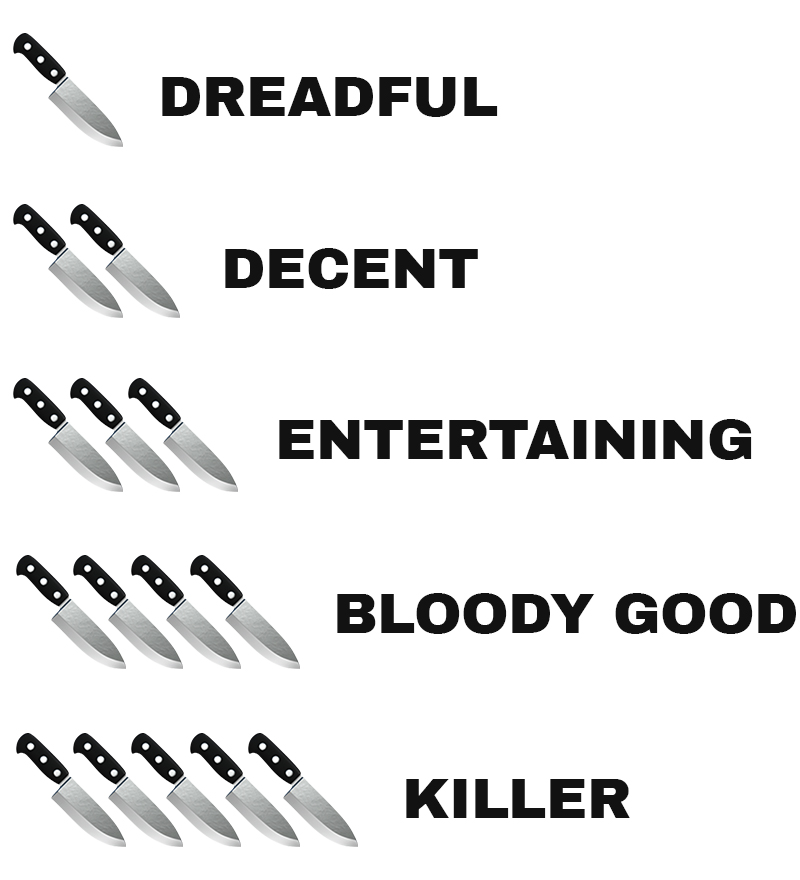Sponsored feature: The Juniper Motion Picture Company
Central Dental is a new short horror film written and directed by Lindsay Thomas Robinson.
Lewis is mugged late at night in a back alley and loses a tooth after being punched in the face. Luckily, Lewis is outside of a 24-hour dental clinic and the receptionist reassures him that he will be taken care of despite not having any money. But things soon take a terrifying turn when he is given an anesthetic injection that makes him unable to move.
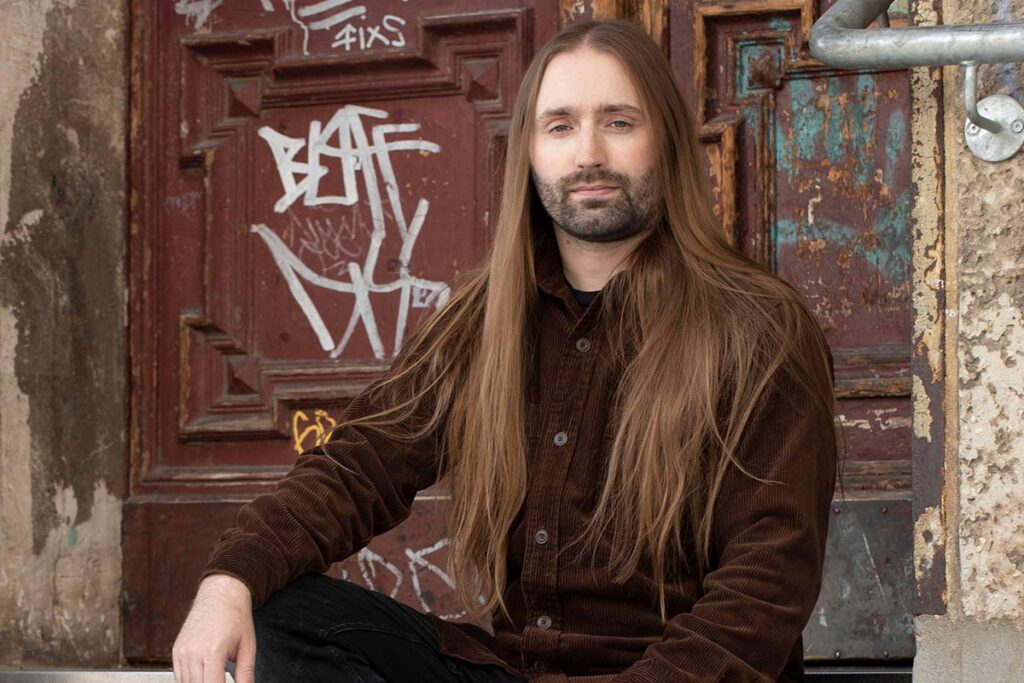
A Q&A with writer/director Lindsay Thomas Robinson
Thanks for joining us at Rabbit in Red, Lindsay! Your new short film, Central Dental, was just released online this month, and I have to say it’s truly unlike any horror I’ve seen. How did you come up with the concept and were you inspired by other horror stories or filmmakers?
Thanks so much for enjoying the short film! The original idea of the concept is based around these cartoon mascots of a smiling tooth that many dentist offices have. I always thought that was a bit weird, and so built a concept around how it might work if one of these creatures was real. Going to the dentist isn’t my favourite activity either, and I’m sure many people can relate to that aspect of the short. So tapping into the experience of a routine dental exam that ends up taking a left turn was fun to explore.
There are several filmmakers/movies that all had an aspect of influence on me with Central Dental. Sam Raimi’s Evil Dead 2 and John Carpenter’s The Thing are both amazing films, and their use of practical monsters and gore effects still holds up really well considering they both came out 30+ years ago. Because of these films, I was always interested in trying to find a way to get a practical monster into a project of mine.
I was always interested in trying to find a way to get a practical monster into a project of mine.
—Lindsay Thomas Robinson
Another influence is the David Lynch movie Eraserhead, in particular how the soundscape in the film creates this oppressive feeling. So in the edit, taking the approach of building a sound bed of atmosphere with sparse music cues in key moments really helped to sell the idea that where this guy has ended up probably isn’t going to end well for him.
Lastly, this is my first narrative short film and my first opportunity to really work with the pacing of a film. The other films I have made so far are music videos and a documentary web series; with those kinds of projects, there isn’t a lot of room to slow the pacing down. Michael Haneke and Yasujirō Ozu’s films are not afraid to linger on a shot for a long time if necessary, and after seeing their films for the first time I learned how effective not cutting to another shot can be. This short doesn’t feature shots anywhere near how long some of their shots are, however slowing things down and lingering longer than I would have previously was a lot of fun.
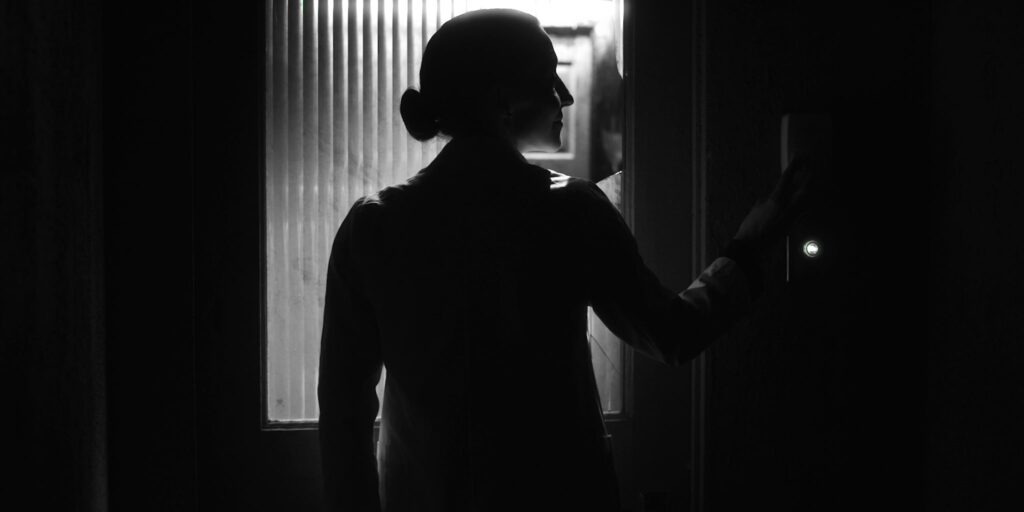
Central Dental is set in an emergency dental clinic, with the operating room located in a dark and dingy basement. The setting alone was giving me chills. Tell us about what you were hoping to achieve with the location and how you found it?
For me, this film isn’t necessarily trying to 100% reflect the real world. So I think when making a horror film like this, it is a good opportunity to get as grungy as possible with the locations. It was important to have a beat up and dirty exam room to reinforce the impression that this dental clinic likely isn’t fully up to normal operating standards.
All of the locations were found by Samantha Quantz, the film’s producer. The operating room was a set constructed in a vehicle bay. So there was a cement floor with a drain in the middle, and a cinder block wall parallel to the dental chair. Everything else was custom made! Malorie Shmyr, our production designer, had the idea to add scratches to the walls and dentist chair. And that added a lot of character to the room, it made it feel like what is happening to our main character has happened many times before. Another detail added was the power cables strung along the walls in all of the interior sets, to add some foreshadowing to the building’s electrical power issue.
Building the operating room set also has the big advantage of being able to place everything in the room where it needs to be. When Lewis first enters the room, I wanted him to see a second door on the opposite side of the room to introduce the dentist, and that there might be something interesting she is looking at on the other side of the door. For the big reveal of the monster, it was important to have Ronnie enter through the second door from behind where Lewis was sitting. Another consideration is the practical element of having enough room for our tooth monster Ronnie to be able to enter the room and walk around the dental chair. It would be very challenging to find a real dental clinic that could accommodate all of this.
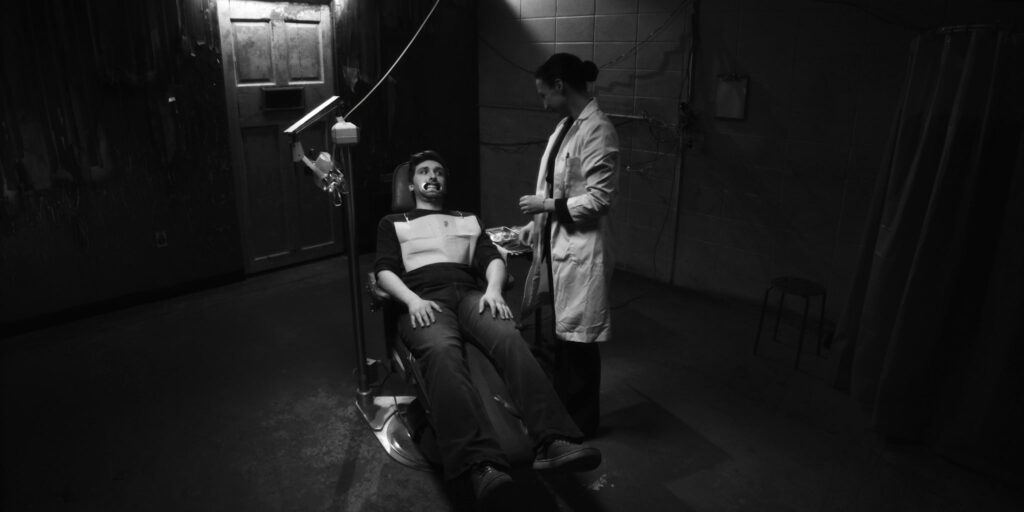
The cinematography and special effects are compelling and capture the tone of the film wonderfully. Why did you decide to shoot completely in black and white? What were your biggest challenges when filming?
Several years before we made this film, I made a music video in black and white that was also horror-themed and I found it really effectively communicated the bleak tone and world that these characters lived in. I’m also a big fan of black and white films, and it isn’t super common for modern films to be made this way. David Baron, our cinematographer did an excellent job at making the world we see feel so oppressive and dark.
Since this film is essentially a monster movie that takes itself seriously within its own world, but also has some goofiness to it I thought that black and white would be the best way to sell this to the audience. In a practical sense, I think it helped make our tooth monster Ronnie look much more natural and like he existed in this world.
The other side of going with black and white was also to show how dark everything was in the dental clinic, to add to the foreshadowing that the building is running low on power. So that at the end when the lights all come back on after Ronnie “restarts the generator” it will make sense from what we had seen earlier.
Bold Raven FX (Brendan James Boyd and Alana Banks), the team in charge of building Ronnie and the prosthetic limbs really hit it out of the park with the design they came up with. Making Ronnie as “realistic” as possible for being a practically constructed tooth monster and not being too campy was important, and I think the design worked really well.
One of the biggest challenges with filming was guiding Marc Lacoursiere (the actor playing Ronnie) in the shot after he walks out of the room and sits on the pedal-powered electrical generator. The crack on the tooth body was there to provide a little hole for him to see, but he can’t see his feet at all, so we had to count down out loud how many steps there were for him to step before he could stop and try to get on the bike.
Tension is built as Lewis is given a strong freezing agent making him unable to move. I had no idea what to expect but I knew nothing good was to come. Then, the monster of the film is revealed—a creepy giant tooth! Tell us more about your ideas for the monster and how they were brought to life?
As I mentioned above, the inspiration for the tooth monster was based on mascots and logos that many dental clinics use. I wanted the character to reference the idea behind those logos while also being way more “horror”. The idea behind the character is a bit silly, which would be impossible to fully get away from, so making Ronnie based around a living tooth with roots for legs and no exaggerated features at least gets it out of the realm of a cartoon character.
Through other projects, I had known Brendan James Boyd and knew that he and his team could make the Ronnie suit and limb prosthetics. So I was very happy they were interested!
Alana drew up the concept art of Ronnie, and there were only a couple of revisions before we landed on the final design.
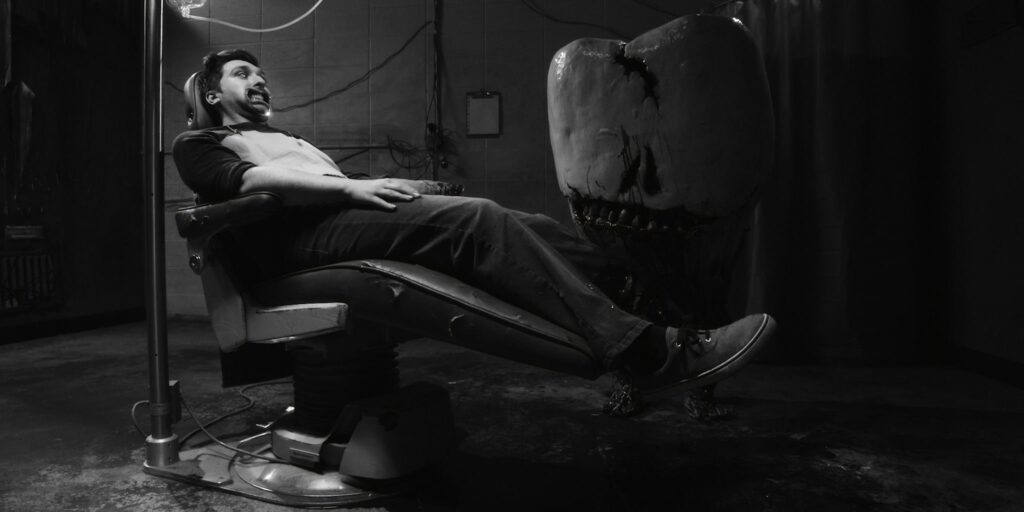
What other themes are touched upon in Central Dental and what are you hoping audiences take away from the film?
In a literal sense, Central Dental is about how it costs an arm and a leg to go to the dentist. I suppose on a different level (not that much of a different level) it explores the cost of medical care and how someone can become trapped in that situation.
However, for the most part, I hope that when someone watches it they have a fun and creepy experience watching Lewis as he unknowingly gets pulled into this terrible situation against his will.
For movie updates from Lindsay Thomas Robinson, follow @lindsaythomasrobinson and visit his official website.
You might also like
More from Indie Horror
The Forest – A Post-Apocalyptic Thriller with a Romantic Twist
Sponsored Feature: Twin Hearts Productions in association with Sonvelt Media The Forest is a post-apocalyptic romantic drama written by Reine Swart …
Under Control (Reworked) (Reclaimed) (Re-released)
Sponsored Feature: SimmeringFire Productions Under Control is a gripping psychological horror short written/produced by Jazmine Cornielle and directed by Jenna Brady. …
Loose Ends: Victim No More Part II – A Friday the 13th Anthology Sequel
Sponsored Feature: 3PD FILMS Loose Ends: Victim No More Part II is a feature-length anthology sequel to the short Friday the 13th …

